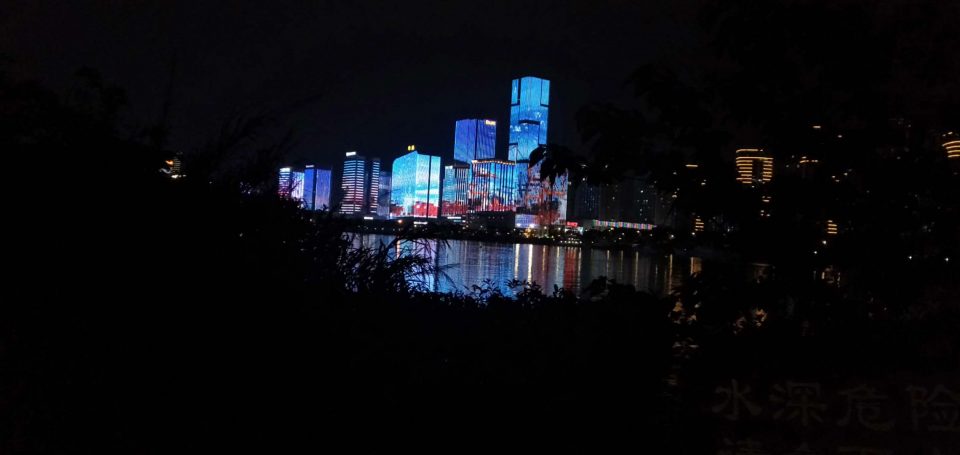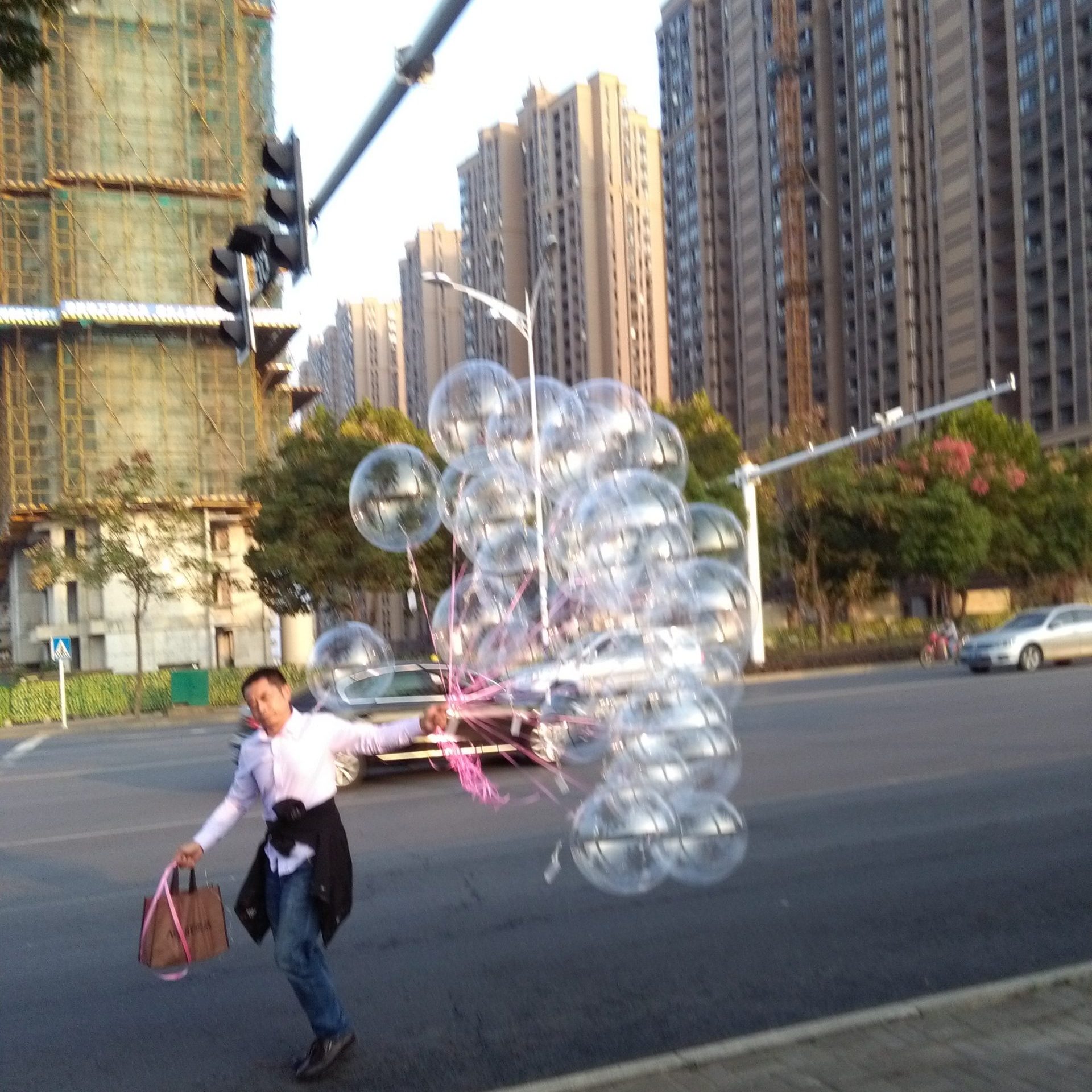My first post is about the high rise building, specifically the apartments in China, having recently moved to my first rented place in Fuzhou. But as the Coronavirus spreads its New Year’s message from a vengeful mother nature we are forced to take refuge in our cozy isolation chambers. I have been thinking about how we might want to live among each other in the future. – Jason

Tomb Towers: UK High Rises
In my home country the UK ‘high rise building’ is a dirty term and this can be broken down to two reasons:
1) They have a bad history; associated 关联的 with bodged construction, neglect and class divides, Government shortsightedness and a lack of individualism. A shameful love child of a poor Post War economy.
2) We do not regard them as beautiful. To understand why see reason 1.
The British are obsessive about preservation保存 and today many of these buildings are protected and re-purposed to suit new needs in innovative ways, adding to their story. For example, Balfron Tower in London, which has often featured in films and music videos as a symbol of urban danger, nowadays not only has heritage status but also new expensive apartments; giving a gentrified facelift to a saggy modernism. Buildings then, hold the weight of memories and the ghosts of cultural histories which overlap with new ones. The high rise is suitably Chinese as it fulfills both The never-ending Communist spirit of mass identity and State Capitalism’s desire for maximum profiteering of private space. It kinda makes historical sense. (It also explains why they seem to never stop drilling and re-building parts in my neighbourhood. But that’s another story!)
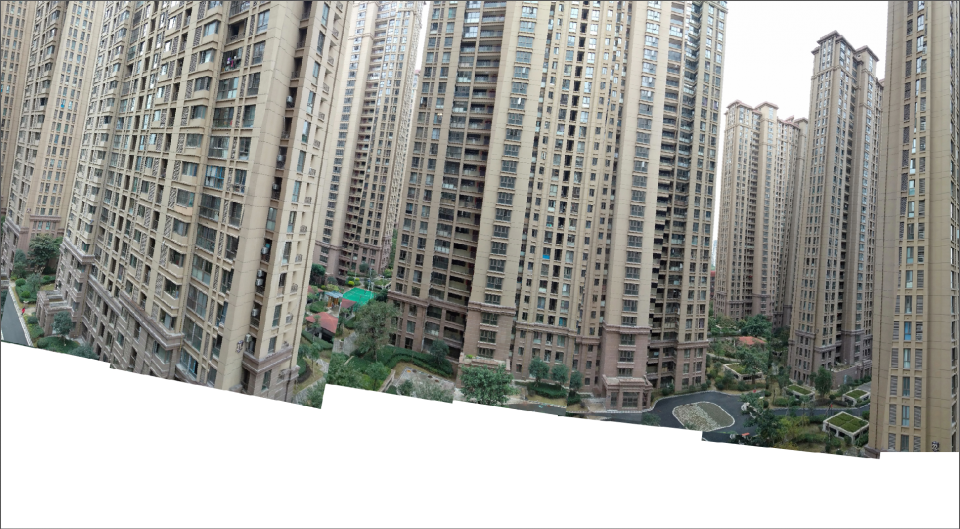
心里: Buildings Map The Fate Of Our Psychological State
From the 10th floor my eyes trace winding paths that lead to a breeze ridden badminton game between father and daughter. I enjoy my new apartment, in fact, I love it (but I get lost trying to find the damn building, being that it’s smack-bang in the middle of 41 others). A perfect concrete forest that walls my line of vision. Where lifts catch people falling in awkward silence. We know these are common in China. Striations rising rapidly. Many appear empty inside and yet I am always told that they are all sold out, eagerly waiting an insemination of new fortunes and new marriages.
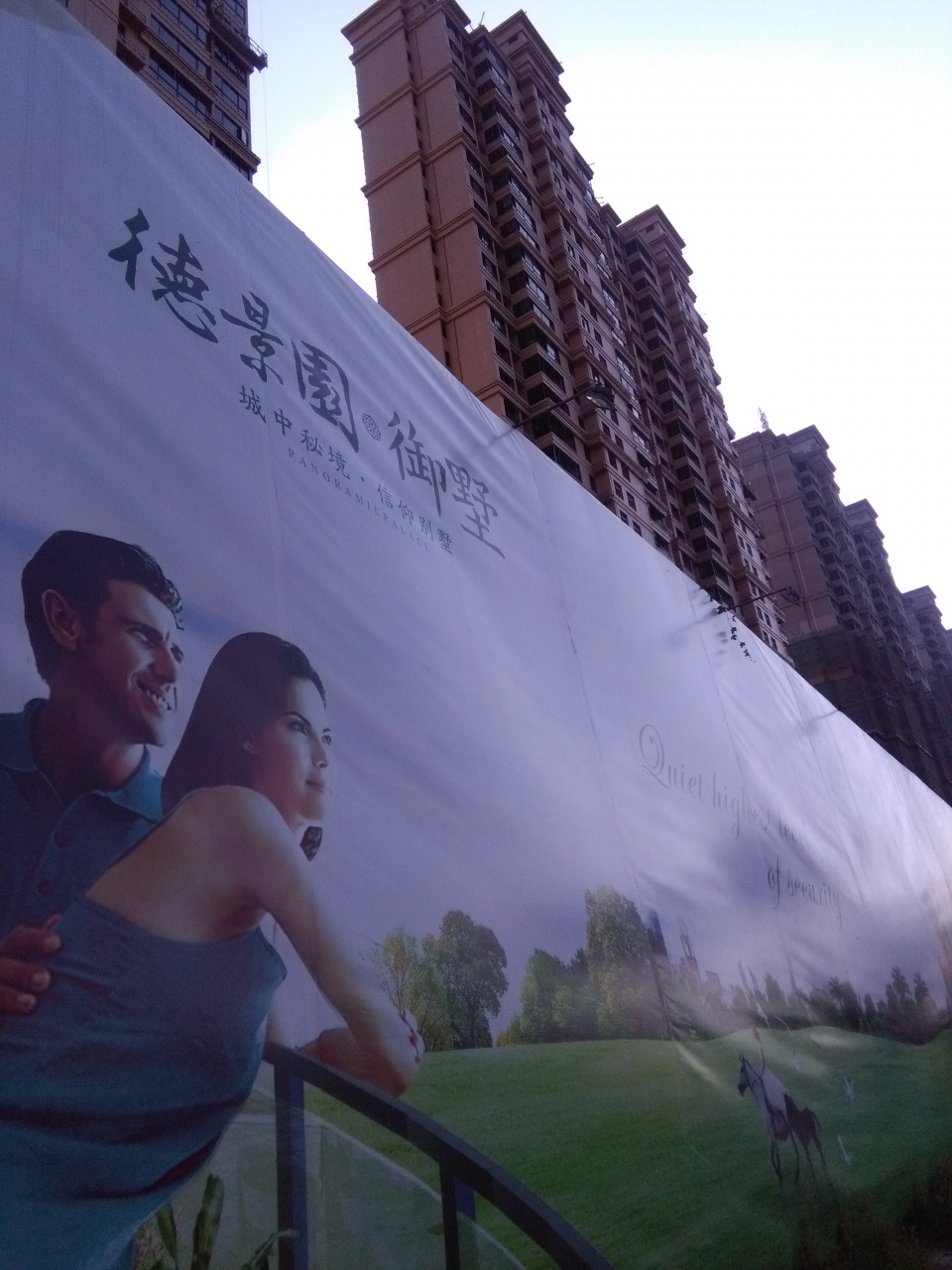
As exciting as China’s energy for building is, I suppose the house is always an unnatural thing to us, unlike other animals who use what they can, we need furniture and materials, builders and ideas and dreams to sell them. I found the poster above* interesting for its use of such obvious lies to advertise its high-rise housing. Not least the relationship of desires made between: white + young + wealthy + heterosexual couple +huge garden, looking out from their apartment (and who appear to own a stallion?!). It seems cliché and unecessary for them to be playing this exotic desire though.
But how about at least offering something more distinctive to each building, so they can be navigated easily for idiots like me? I wanted to play with CAD and design my own ideas of making iconographic, but equally pragmatic spaces. I thought about the idea of buildings based on the I Ching 易经 codes. Even though they carry the burden of so much meaning, their shapes and qualities have an inherent appeal to me. Are buildings, with their symbolic power and civil construction society’s myth creators or do they translate what is already there in waiting, in our collective desires? This question can be applied to I Ching, where self-fulfilling prophecy is intangled with fate.
Imagine a mapped out I Ching zone or community where the location readily maps the I Ching system, with each building offering unique spaces for light and uses. That’s ultimate feng shui, aaaaand, I’d never get lost!
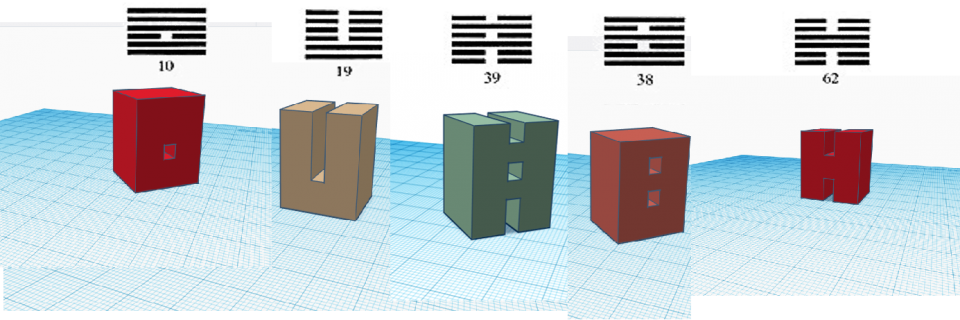
Nevertheless, however much you portray I Ching, balance and achieved desires, enclosures will still create their own social viruses of daily madness, revealing the internal symptoms of the external world on the human. The two become a cycle. The office, the prison, the school, the hospital etc.
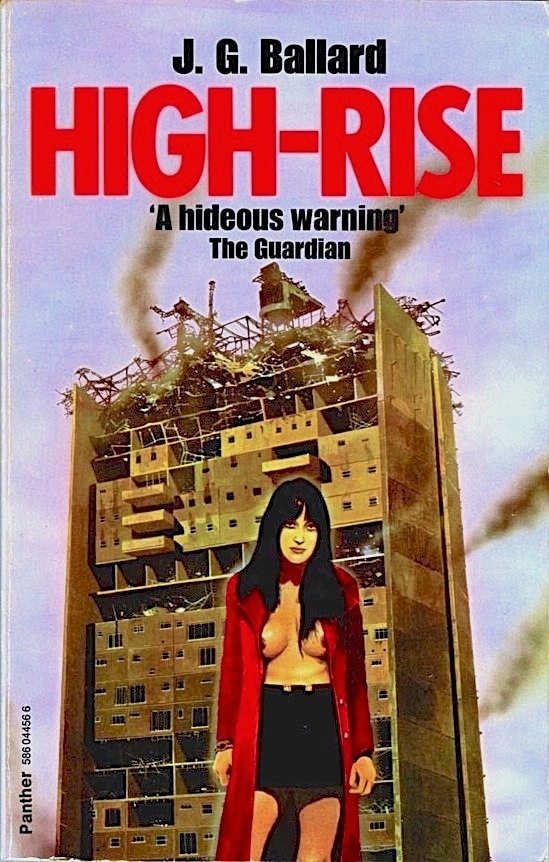
This has been explored many times over; for example, in JG Ballard’s 1975 novel ‘High Rise’ (coincidentally, influenced by the writer’s time in Balfron Tower) the luxuries and convenience of a wealthy high-rise building cannot deter its own downfall.
In fact, it is because of this enclosed ecosystem of commodity convenience that people’s self imposed alienation 异化 creates these psychic nightmares, as they lose touch with the outside world and its necessary ‘unpleasures’. Ending in bourgeois death drives. The line between solitary ecstasy and alienation is not always clear.
(Even now, it is reported people in Wuhan are calling out to one another ‘加油’ from their apartments to maintain solidarity and probably the alienation of their madness!) 加油 Wuhan。

The Curtain And The Transparent
This picture above shows something which also interested me, the curtain. The show curtain, the window curtain, the Iron Curtain. This man resembles a soldier ready to reveal a new world to us, the audience. 谢谢 thankyou!!! The existng buildings behind poke their heads out as if to accidentally expose the lie of the image.
In 2003 philosopher Jean Baudrillard wrote about ‘Mass. Identity. Architecture’ as objects that do not show any truth or public culture, but only an extension of the advertisement, like a curtain behind a curtain (well, he would have said TV screens, but you get the analogy). He called for their disappearance which he discusses with architect Jean Nouvel whose Cartier Foundation building celebrates the disappearance of single perspective and abstract ‘transparency’ 透明. A desire not for commodity but to find a truth in achieving emptyness.
When I first read the book 17 years ago I thought this ‘invisible architecture 建筑学’ or ‘non place’ seemed ironically corporate and banal and I was always confused by this, I think because I was considering it in terms of power. Now I think that from a pure aesthetic concern it has merit. New buildings which aim to become a transparent event space, where content can pass through. As opposed to the old, like Balfron Towers, where contexts are layered on top of one another as the spaces become reused and reimagined. On the one hand, the revolutionary zeal for newness becomes a nothingness where we are asked to not impose meaning. Whilst on the other hand, those seeking identity and narrative find themselves in the embrace of nostalgia. I think this Century – in Western culture at least – has born these two trends and Nouvel and Baudrillard have proven their relevance in the former.
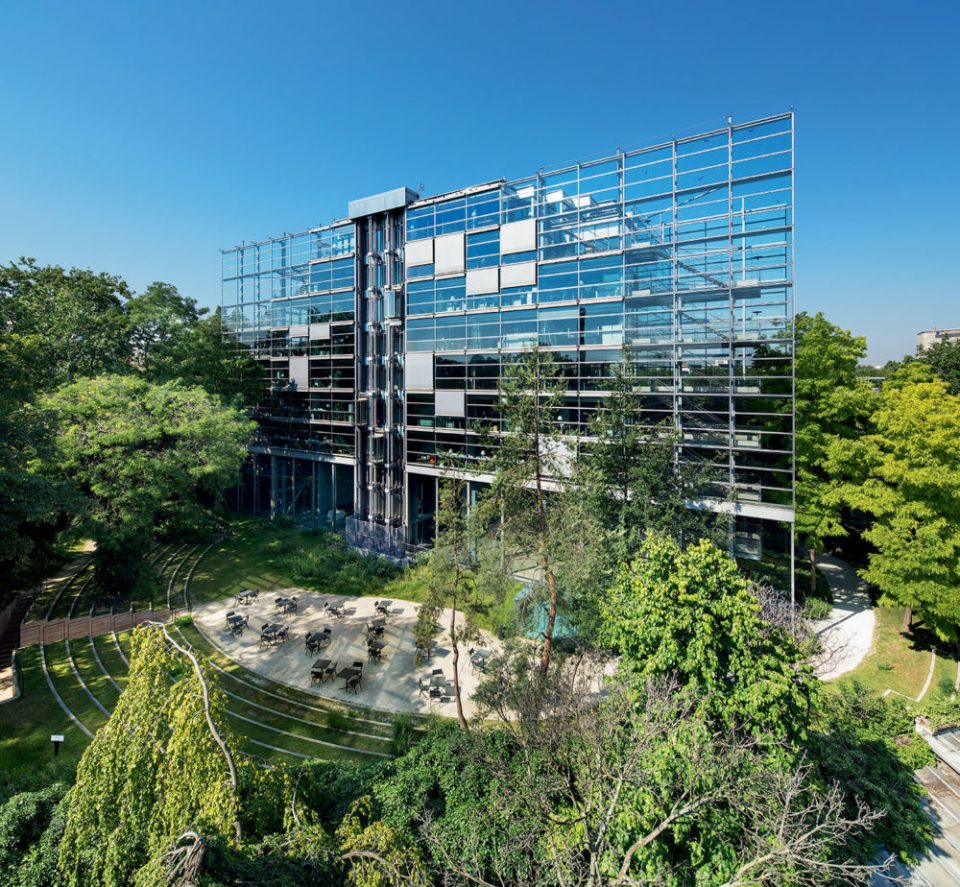
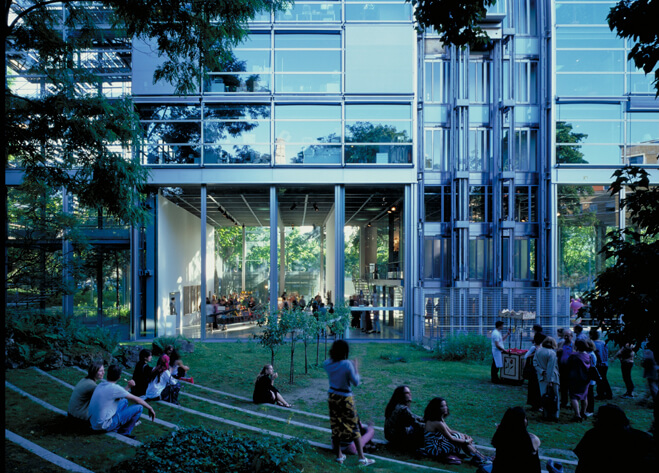
High rise housing is by no means transparent, but I don’t think it lacks abstraction either 抽象. It’s more that they are super utilitarian. It is their modernist uniformity which makes them abstracted, without playful opportunities. Sometimes suffocatingly so and without a healthy sense of chaos. They carry a heavy authority just as they rely on the authority of guards at their gates. Even when the curtain closes.
Past Futures
High rise homes and by extension skyscrapers seem to be the current winners for imagining our future, which is one that finds its imagination in rising ever higher with newer materials and iconic shapes. These buildings have disappeared in the sense that they are very familiar. I just wish they had more interesting ambitious uses. I am reminded of Archigram, UK-based architectural designers who are most famous for their Pop Art style concepts from the 1960’s. I like them because their ideas are so shamelessly hopeful. They place ideas above all else and they celebrated the things that we now view with less optimism; plug-in lifestyles, 24 hour entertainment, man made ecology and technologies derived from war machines. Even so, they make buildings fun and full of self exploration.
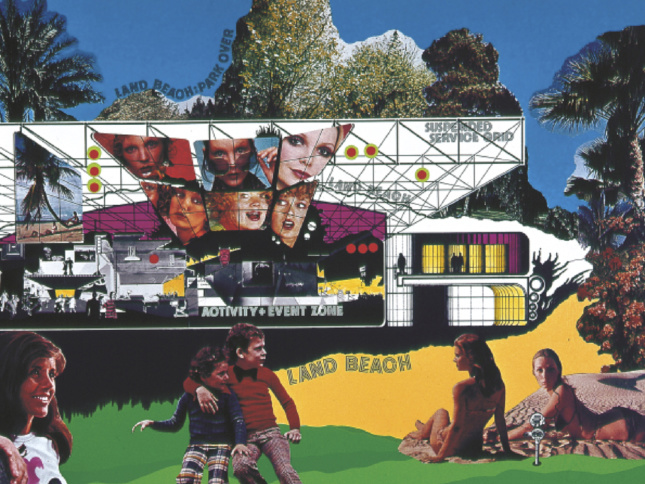
Below, I have decided to design my own version, using photo editing, where the spaces of my IChing 易经 buildings might house such open-ended and optimistic social constructions. Enclosures and spaces of differences. Or just to be ridiculous. After-all it is people behaviour that makes a place a place…
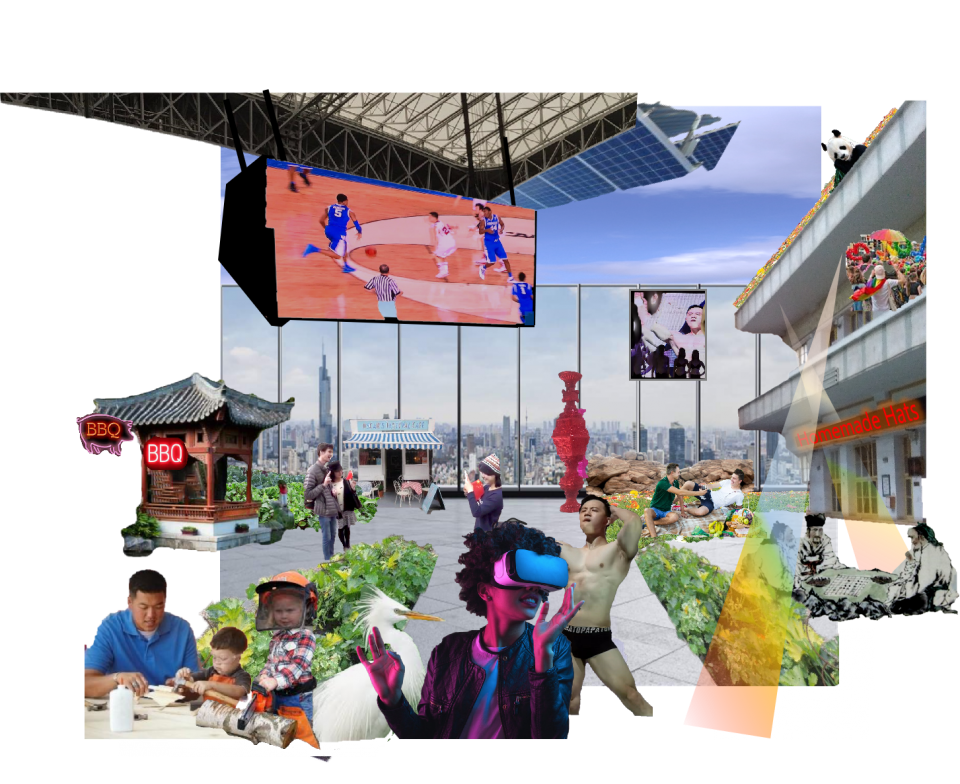
ZZZzzzzZZZzz
The spirit of a building is always in the future whilst creating historic milestones. It seems appropriate that the first 3D printed skyscraper should be made in Dubai; the city that puts the trick in anthropocentric. Where nature and human production is a 21st Century hyper-controlled-efficient environment and where in 3D printing the copy is returned to itself. The Dubai Prime Minister claims 25% of the buildings in 2030 will be 3D printed. But like the Archigram art works It feels like a futurism very much representitive of its time.

Physical space is not just visual, it is also aural and interactive, with demands for integrating smart/digital technology and autonomous or hybrid activities, ‘psychological breaks’ and alternative or flexible spaces. The reality is that the ‘consumer’ and often even the artists of these buildings do not have much decision in determining the making process. Which is not to say that any person can be an engineer or architect, but that the public should demand more allowance to be the architects of their future.
